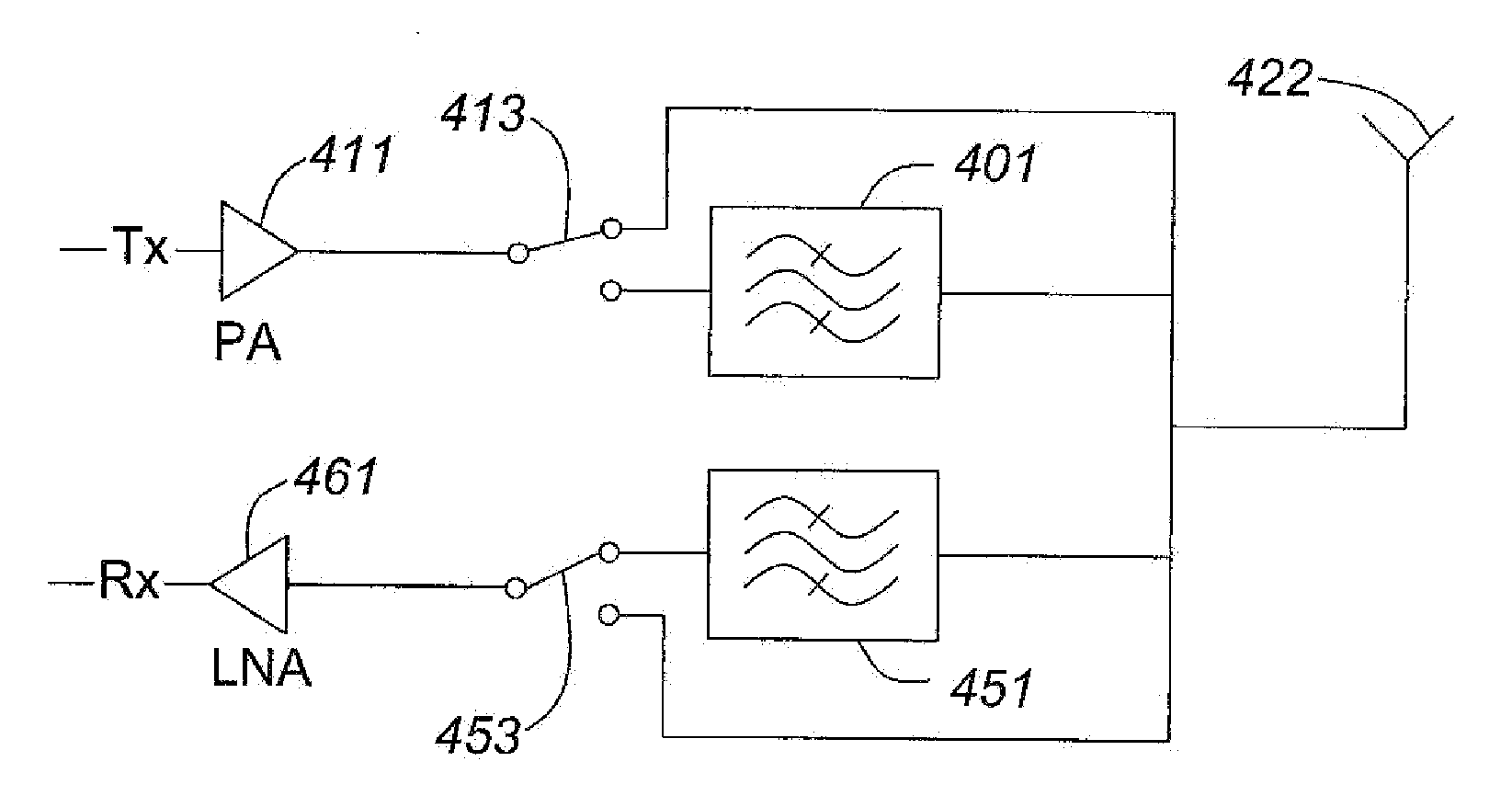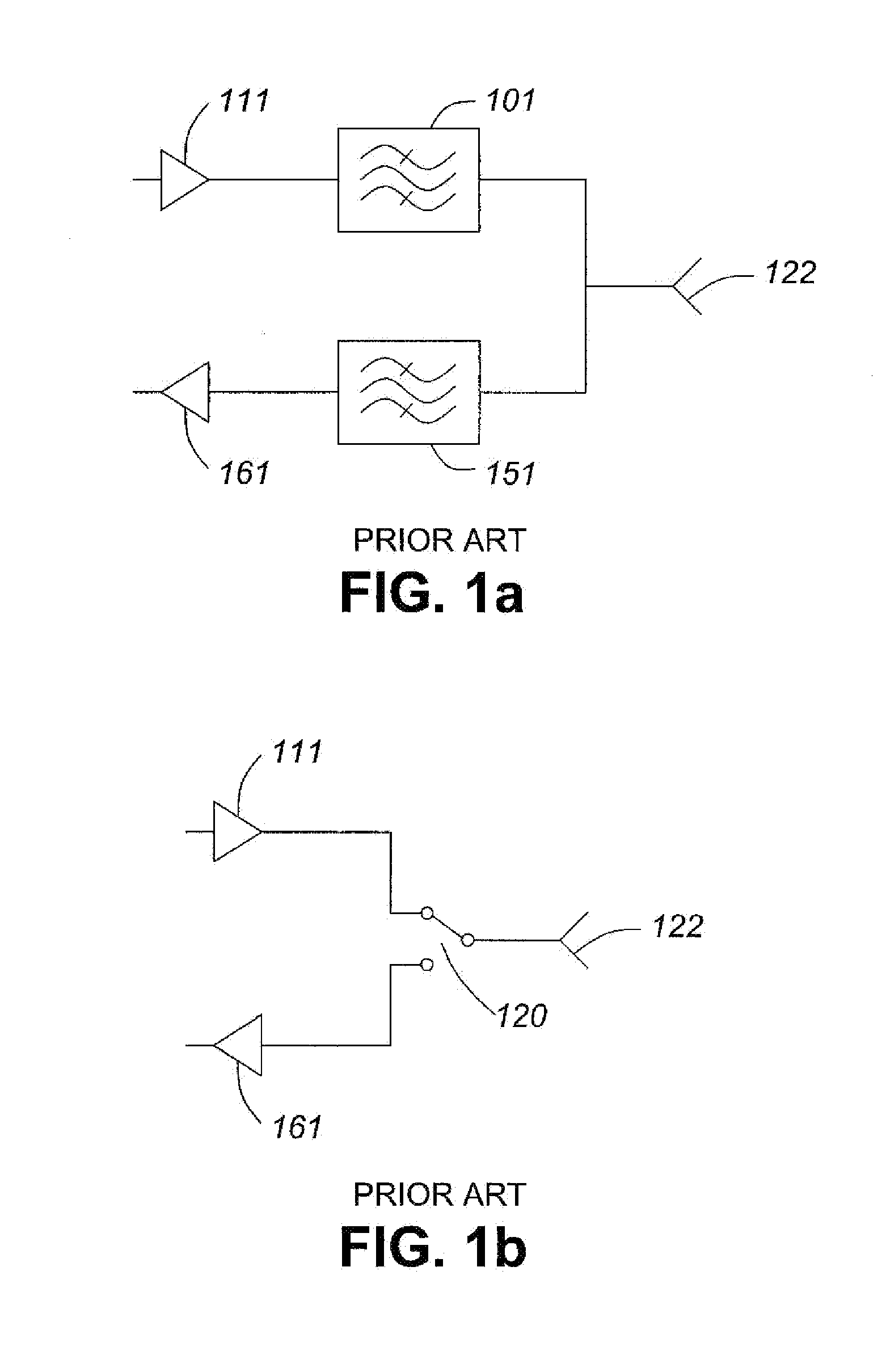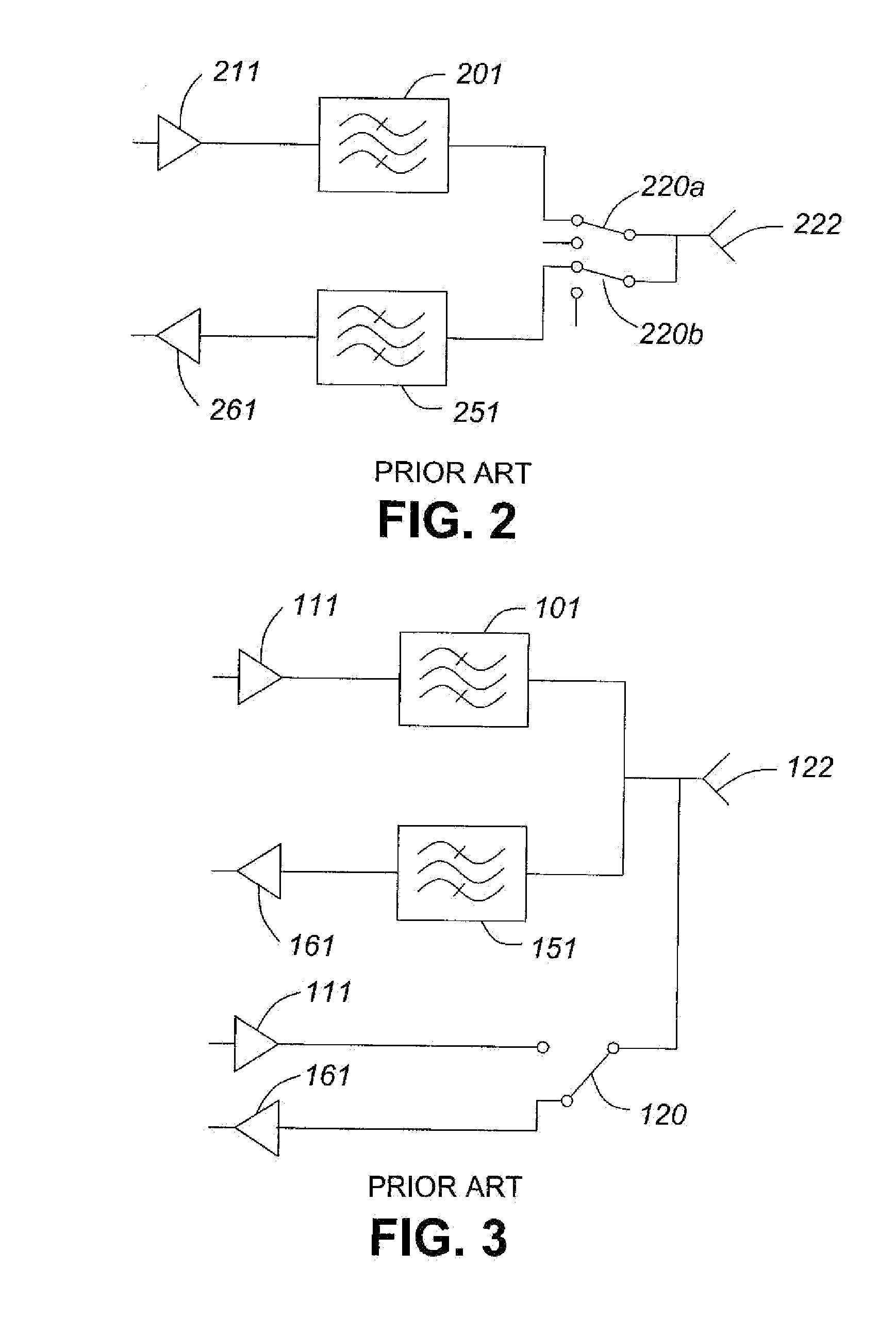Dual mode transceiver
a transceiver and dual-mode technology, applied in the field of communication methods and systems, can solve the problems of wasting rf energy that otherwise would have been provided, the effect of transmission loss loss, and easy implementation of switches with limited loss
- Summary
- Abstract
- Description
- Claims
- Application Information
AI Technical Summary
Benefits of technology
Problems solved by technology
Method used
Image
Examples
Embodiment Construction
[0022]Referring to FIG. 1 a, a prior art FDD circuit is shown. The antenna 122 is coupled to each of two filters 101 and 151. The filter 101 is then coupled to power amplifier 111 forming the transmit portion of the FDD circuit. The filter 151 is coupled to low noise amplifier 161 forming a receive portion of the FDD circuit. The filters 101 and 151 are designed for passing signals within appropriate transmit bands and receive bands, respectively. In this way, the filters act to isolate the transmit band from the receive band which may be closely space in respect of frequency and to isolate the receive band from the closely spaced transmit band.
[0023]Referring to FIG. 1b, a prior art TDD circuit is shown. The antenna 122 is coupled to switch 120. The antenna 122 is switchably coupled to power amplifier 111 forming the transmit portion of the TDD circuit. The antenna122 is also switchably coupled to low noise amplifier 161 forming a receive portion of the TDD circuit. The switch is a...
PUM
 Login to View More
Login to View More Abstract
Description
Claims
Application Information
 Login to View More
Login to View More - R&D
- Intellectual Property
- Life Sciences
- Materials
- Tech Scout
- Unparalleled Data Quality
- Higher Quality Content
- 60% Fewer Hallucinations
Browse by: Latest US Patents, China's latest patents, Technical Efficacy Thesaurus, Application Domain, Technology Topic, Popular Technical Reports.
© 2025 PatSnap. All rights reserved.Legal|Privacy policy|Modern Slavery Act Transparency Statement|Sitemap|About US| Contact US: help@patsnap.com



